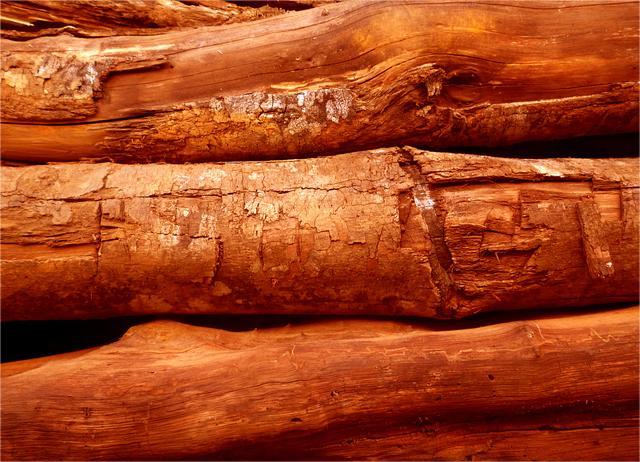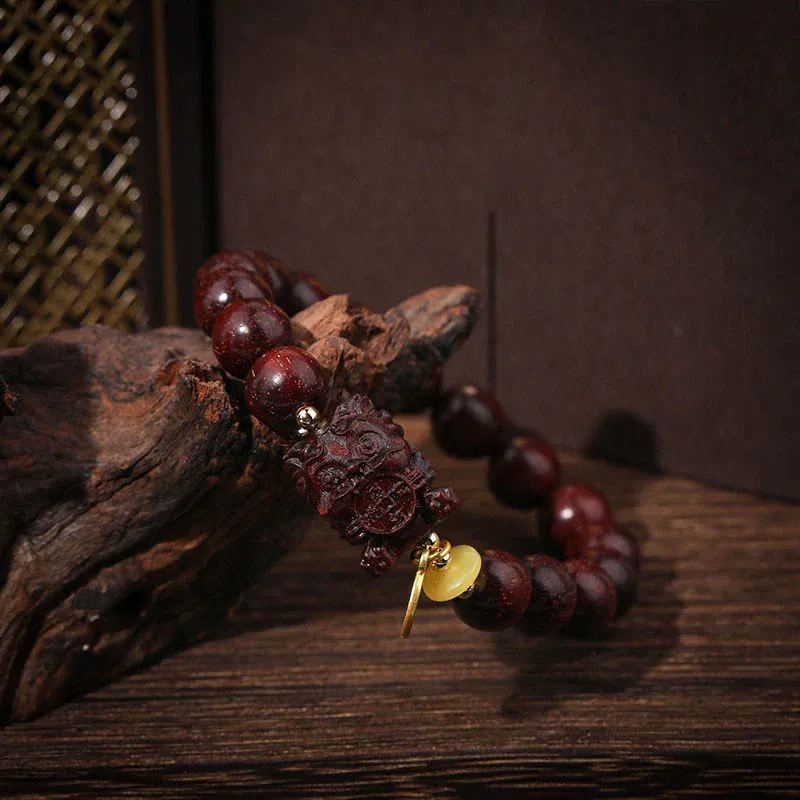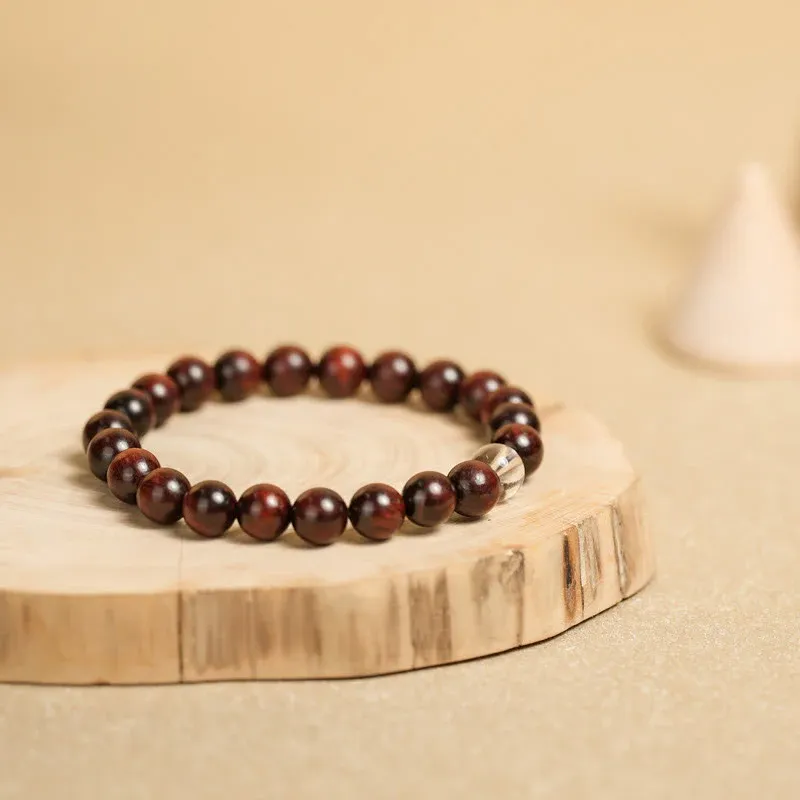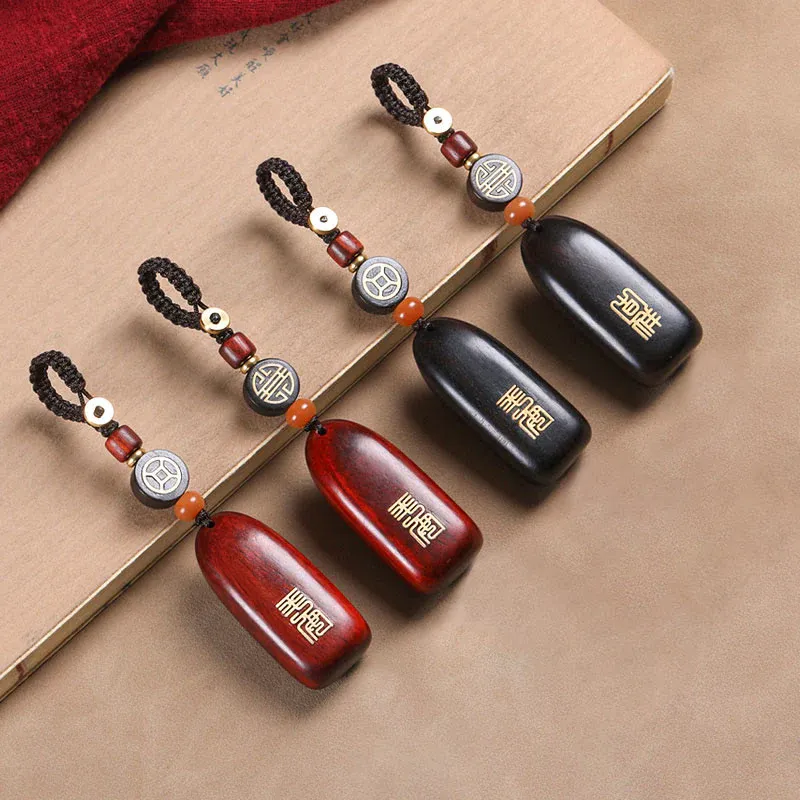Small-Leaf Red Sandalwood: A Precious Timber and Cultural Heritage
Sandalwood Red Sandalwood (Pterocarpus santalinus), also known as small-leaf red sandalwood, cowhair-patterned red sandalwood, and madder leaf red sandalwood, is a deciduous tree species in the legume family. It has a straight trunk, a broad umbrella-shaped canopy, and can grow up to 15 meters tall. The bark of young trees is dark brown and fissures into rectangular flakes, while mature bark turns gray-brown. When the bark is injured, dark red sap flows out. Its leaves are odd-pinnate compound leaves with alternate, elliptical, or oval-shaped leaflets. The flowers are yellow or pale yellow and bloom from November to December, and the fruiting period is from April to May, with round seed pods.
Distribution and Growth:
Sandalwood red sandalwood naturally occurs in India, Thailand, Malaysia, Vietnam, and other rocky or hilly areas. It has been introduced and grown sporadically in provinces like Yunnan, Hainan, Guangdong, Guangxi, Fujian, and southern Taiwan. It prefers sunlight, tolerates hot and dry climates but is intolerant of shade.
Red sandalwood is prized for its material quality and has been widely used in furniture production, craft carving, musical instrument manufacturing, and traditional medicine. In the past, the finest red sandalwood was used for imperial furnishings in the Ming and Qing dynasties, earning it the title "wood of emperors." It is one of the most valuable woods in the world and was listed as "Endangered (EN)" in the IUCN Red List of threatened species on October 20, 2020.
Morphological Characteristics:
Red sandalwood is a medium-sized tree, typically found in southern India. It is diffuse-porous wood with heartwood that ranges from orange-red when freshly cut to deep purple or black-purple over time, often with light and dark streaks. It has visible scratches, and the wood chips or shavings soaked in water turn reddish-purple and fluoresce. The wood has a smooth texture and natural luster, often with interlocked or locally wavy grain, giving rise to the "cowhair" pattern. The wood is extremely dense and sinks in water, with an air-dry density of 1.01–1.26 g/cm³.
Growing Environment:
Red sandalwood thrives in bright light and is drought-tolerant. It can withstand temperatures as high as 45–46°C and as low as 7.2–12.7°C. It is commonly found in arid, rocky hillsides, preferring soils developed from shale, quartzite, and sandstone, at altitudes ranging from 150 to 1,000 meters. It grows best in well-drained, fertile sandy loam or alluvial soils but does not tolerate waterlogged or clayey soils.
Distribution:
It is native to India, Thailand, Malaysia, and Vietnam. In China, it is sporadically cultivated in Guangzhou, Yunnan, Hainan, and Taiwan.
Species Classification:
Red sandalwood species are classified under the Pterocarpus genus and can be further subdivided into categories such as:
- Sandalwood Red Sandalwood (Small-leaf Red Sandalwood)
- Rosewood
- Old Lao Rosewood (Laotian Rosewood)
- Andaman Red Sandalwood
- Indian Rosewood
- Burma Rosewood
Key Varieties:
- Small-leaf Red Sandalwood: Known for its fine grain and deep purple or black hue over time, it is highly valued for its durability and color. Genuine small-leaf red sandalwood is rare and expensive.
- Golden Star Red Sandalwood: Named for its glittering golden points visible under polishing, these spots are crystallized resin within the wood fibers, giving the wood its unique luster.
- Cowhair Red Sandalwood: Characterized by its extremely fine, slightly curved grain resembling cowhair, it is highly valued next to golden star red sandalwood.
- Chicken-blood Red Sandalwood: This type lacks the golden star pattern but is known for its deep, rich reddish-purple hue, often with irregular zebra-like stripes, adding a sense of curiosity to the wood.
Cultural and Historical Value:
Small-leaf red sandalwood has been highly prized since ancient times. In "Compendium of Materia Medica", it is recorded that red sandalwood can stop bleeding, relieve pain, and regulate blood flow, contributing to improved complexion and well-being. Rubbing red sandalwood powder on the skin was said to make it appear smooth and rejuvenated. Additionally, red sandalwood has been used in traditional medicine to relieve joint pain and improve digestion.
Historically, red sandalwood was used to craft small objects, but by the late Ming Dynasty, scholars began to appreciate its understated beauty, and it became a favored material for scholarly items such as paperweights, brush pots, and incense burners. In the Qing Dynasty, red sandalwood was extensively used in furniture production, including tables, chairs, cabinets, and boxes.
Feng Shui Uses:
- Ward Off Evil: Red sandalwood, often used to craft Buddhist prayer beads, is considered an important spiritual material in Buddhism. It is believed to balance yin and yang and can ward off evil spirits, providing peace and protection.
- Attract Wealth: Its deep, rich color and intricate grain patterns symbolize prosperity and success. Over time, red sandalwood takes on a festive red hue, enhancing its ability to attract wealth and improve Feng Shui.
- Health Benefits: The mild fragrance of red sandalwood is said to have calming effects, promoting mental clarity and reducing wrinkles by encouraging cell regeneration. It is also believed to improve sleep and ease joint pain.
Wood and Furniture:
Due to its hardness, fine grain, and rich color, red sandalwood is often used in the production of high-end furniture, jewelry, and ornaments. It is also used in the making of musical instruments, with its fine structure allowing for clear, resonant tones. The powder of red sandalwood has medicinal properties and is used in traditional Chinese medicine.
Small-leaf red sandalwood, or Pterocarpus santalinus, is the most highly regarded variety of red sandalwood, treasured for its exceptional quality and rarity. It has been a symbol of imperial power, and its historical use in royal furniture and artifacts has further elevated its status. Today, red sandalwood continues to be a sought-after material for fine craftsmanship and traditional medicine.
Conclusion:
Small-leaf red sandalwood, with its centuries-long growth cycle and intricate grain, is one of the world's most valuable woods. Its significance extends beyond its material properties, embodying cultural, spiritual, and medicinal value. From ancient traditions to modern applications, red sandalwood remains a prized treasure, revered for its beauty, durability, and mystical allure.
Brand Introduction: BuddhaPurify
BuddhaPurify is a brand deeply rooted in the rich heritage of Chinese traditional culture and Buddhist practices. Our mission is to offer a unique blend of ancient wisdom and modern elegance through our products, which are designed to enhance spiritual well-being, personal growth, and holistic health.
Foundation and Philosophy
Inspired by the timeless teachings of Buddhism and the profound traditions of Chinese culture, BuddhaPurify is dedicated to providing products that reflect the serene and enlightened aspects of these ancient philosophies. Our brand is built on the principles of mindfulness, purity, and spiritual harmony, aiming to bring balance and tranquility to our customers' lives.
Cultural Enrichment
We believe in the power of cultural enrichment and strive to educate and inspire our customers through the stories and meanings behind our products. Our brand seeks to bridge the gap between traditional spiritual practices and contemporary life, offering products that resonate with both ancient wisdom and modern sensibilities.
Conclusion
BuddhaPurify is more than just a brand; it is a journey into the heart of Chinese traditional culture and Buddhist spirituality. Through our thoughtfully curated products, we aim to support your quest for inner peace, spiritual growth, and a balanced life. Explore our collection and experience the harmonious blend of tradition and tranquility that defines BuddhaPurify.





